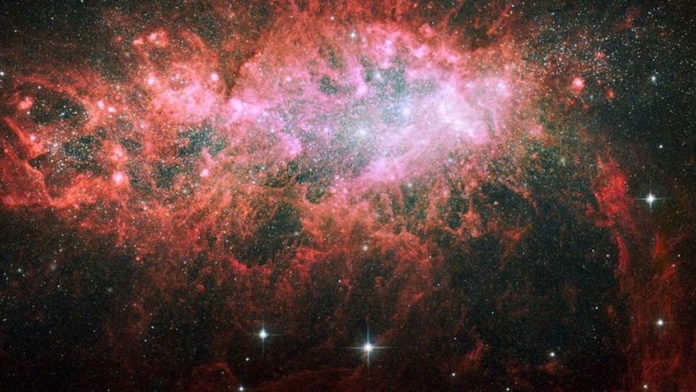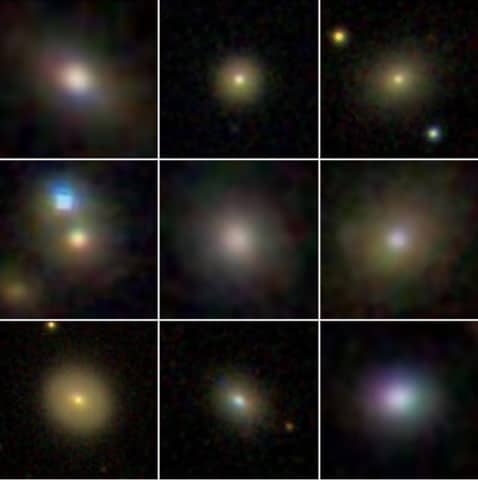Almost every galaxy in our universe appears to have a giant black hole in its center.
Now a new study reveals that powerful winds driven by supermassive black holes in the centers of dwarf galaxies have a significant impact on the evolution of these galaxies by suppressing star formation. What’s more, the impact can be just as dramatic.
For the study, scientists gathered the data from the Sloan Digital Sky Survey, which maps more than 35% of the sky, to identify 50 dwarf galaxies, 29 of which showed signs of being associated with black holes in their centers.
Scientists found the evidence of winds in six among all 29 galaxies- specifically, high-velocity ionized gas outflows- emanating from their active black holes.
Gabriela Canalizo, a professor of physics and astronomy at UC Riverside said, “Using the Keck telescopes in Hawaii, we were able to not only detect, but also measure specific properties of these winds, such as their kinematics, distribution, and power source — the first time this has been done. We found some evidence that these winds may be changing the rate at which the galaxies are able to form stars.”
Christina M. Manzano-King, the first author of the research paper said, “What’s interesting is that these winds are being pushed out by active black holes in the six dwarf galaxies rather than by stellar processes such as supernovae. Typically, winds driven by stellar processes are common in dwarf galaxies and constitute the dominant process for regulating the amount of gas available in dwarf galaxies for forming stars.”
“When wind emanating from a black hole is pushed out, it compresses the gas ahead of the wind, which can increase star formation. But if all the wind gets expelled from the galaxy’s center, gas becomes unavailable and star formation could decrease. The latter appears to be what is occurring in the six dwarf galaxies the researchers identified.”
Laura V. Sales, an assistant professor of physics and astronomy said, “In these six cases, the wind has a negative impact on star formation. Theoretical models for the formation and evolution of galaxies have not included the impact of black holes in dwarf galaxies. We are seeing evidence, however, of suppression of star formation in these galaxies. Our findings show that galaxy formation models must include black holes as important, if not dominant, regulators of star formation in dwarf galaxies.”
Scientists are further planning to study the mass and momentum of gas outflows in dwarf galaxies.
The research was funded by the National Science Foundation, NASA, and the Hellman Foundation. Data were obtained at the W. M. Keck Observatory and made possible by financial support from the W. M. Keck Foundation.
Journal Reference
- Christina M. Manzano-King, AGN-Driven Outflows in Dwarf Galaxies. The Astrophysical Journal, Volume 884, Number 1. DOI: 10.3847/1538-4357/ab4197

